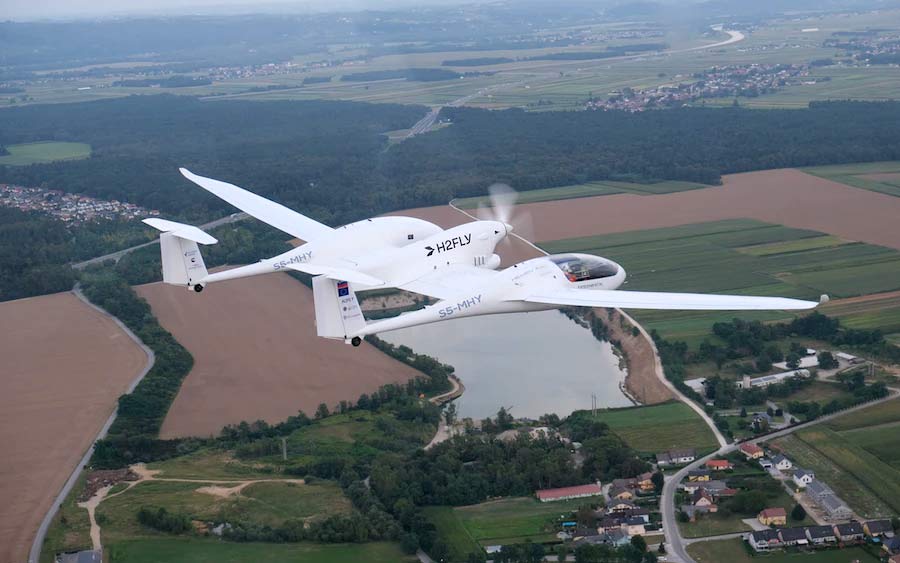Why visit ACE ’25?

H2Fly, a wholly-owned subsidiary of eVTOL developer Joby Aviation, has successfully completed the world's first piloted flight of a liquid hydrogen-powered electric aircraft.
H2Fly, acquired by Joby in 2021, continues to lead the industry on the development and testing of hydrogen aviation propulsion systems. The company completed a series of piloted flights with its HY4 demonstrator aircraft, including one that lasted more than three hours, fitted with a hydrogen-electric fuel cell propulsion system and liquid hydrogen that powered it for the entire flight.
The flights demonstrate the viability of using cryogenically-stored liquid hydrogen instead of gaseous hydrogen, which enables significantly lower tank weights and volume, leading to longer range. The successful installation and demonstration of flight with liquid hydrogen is believed to increase the range of H2Fly's HY4 demonstrator aircraft from 466 miles (750km) to 932 miles (1500km), marking a critical step towards the long-term decarbonisation of mid to long range aviation.
“H2Fly is a pioneer in its field, and we're proud of it achieving this watershed moment in the use of liquid hydrogen to power aircraft,” says Joby CEO JoeBen Bevirt. “In the years to come, battery-electric and hydrogen-electric propulsion systems will enable us to build aircraft that are quieter and make mid to long range air travel possible with zero emissions. It's critical we take action now and invest aggressively in these technologies for the health of our planet and future generations to come.”
The successful flights are the culmination of Project HEAVEN, a European government-supported consortium assembled to demonstrate the feasibility of using liquid hydrogen in aircraft. The consortium is led by H2Fly and includes Air Liquide, Pipistrel Vertical Solutions, the German Aerospace Center, EKPO Fuel Cell Technologies and Fundación Ayesa.
Following this test flight milestone, H2Fly will increasingly focus on its path to commercialisation. In June, it announced the development of its new fuel cell systems, which will be capable of providing its full power range at altitudes high enough to enable commercial hydrogen-electric aircraft, demonstrating real-world commercial aircraft applications.